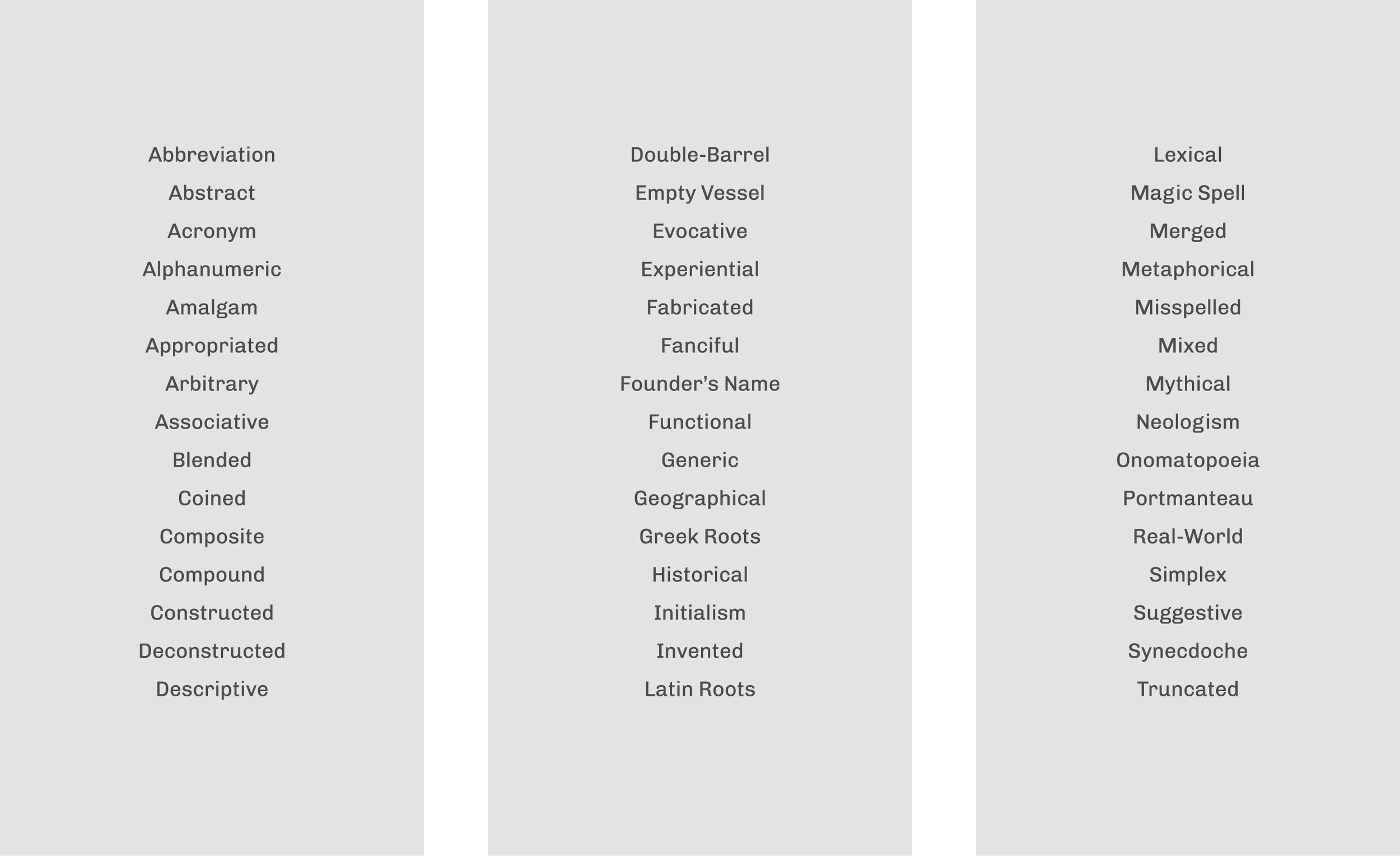What’s In a Name?
Image: Ryan Douglas Jones
While the rest of the world eagerly waits to see how AI will write the future, I ponder the popular Shakespearean adage, "A rose by any other name would smell as sweet.” In my opinion, a rose named by ChatGPT wouldn’t smell as sweet.
Within the context of Romeo and Juliet, the reference is used to state that the names of things don’t affect what they truly are. Fast forward to today where instant gratification is king, attention spans are short, and political, social and economic stressors are at an all time high. Names have a massive impact on the way we define value in people, places, experience and brands. Our associations with names are detrimental to our perceptions of those things. While AI giants are pushing the power of technology and algorithms, we’re seeing a shift in the way we approach the creative process. AI is affecting the way we think of language and the naming process. To me, the true power in creating a resonant and unique name lies within the magic of the human mind.
When I first introduce myself to someone new I’m asked, “Is it Stephanie or Steph?” To me, “Stephanie” has a more official and traditional tone, while “Steph” reads as being more laid-back and approachable. Names mean so many different things to people in different places and within different contexts. “As soon as you label a concept, you change how people perceive it.” (Adam Alter, “The Power of Names”, The New Yorker) Think about how the following brands and names make you feel: Apple, Bezos, Ben’s Originals, Meta, Nike, Trump, Twitter. From positive and inspiring, to controversial and negative, how brands and people behave all impact the trail a name leaves behind.
When it comes to the process of choosing a name for your business or brand, the task can be daunting for many. Out of millions of brands in the world, it seems like all the good names have been taken. Here’s where the magic of the human mind comes in. What I love most about naming is that it’s a process that fuses the best of creative and strategic thinking. Author, Alina Wheeler believes, “Naming is not for the fait of heart. It is a complex, creative, and iterative process that integrates expertise in brand strategy, marketing, research, linguistics, intellectual property law and human psychology.” It’s in that perfect combination of exploration, shared knowledge and creativity that a great name is born.
A name can be direct and descriptive like Whole Foods and Athletic Brewing, suggestive like Supergoop, Bored Ape Yacht Club and Liquid Death, abstract and invented like Olipop, Kodak and Häagen-Dazs, aspirational like Nike and Meta, leverage simple acronyms like IBM and UPS or lean into their origin story and founder like Me & The Bees Lemonade, Clif Bar and Air Jordan. There’s no one size fits all path, but rather a variety of categories and approaches one can use.
Source: Rob Meyerson, Brand Naming
My approach to naming fuses the rigor and curiosity of strategy with the imagination and freedom of creativity. I explore the category, consumer, company or brand and its inherent place in culture. I like to understand the brand’s current perceptions and future ambitions, learn more about the target demographic and examine the competitive landscape. Here’s where I start to find patterns, core themes and big questions to jumpstart my creative juices for when it’s time to brainstorm. Summarizing all my findings within a creative brief, anchored in creative territories, and once approved, I dive head first into ideation. I find the real spark of an idea is found in client workshop sessions, bouncing ideas around with internal teammates or amidst the independent brainstorming sessions. Once a long list of names is generated, it’s time to evaluate.
What defines a good name? I find the best names have a strong balance between being grounded in brand positioning as well as strategic, creative and technical criteria. At the end of the day the chosen name should align with the brand’s positioning and values while also being meaningful, unique, ownable and visually or audibly appealing. While gut feelings may feel right, I find establishing some sort of evaluation criteria framework to be helpful – charts, checklists, circular frameworks – whatever helps anchor your name in rational and strategic thought. This systemic process helps validate your naming options before you begin the trademark search.
Source: Rob Meyerson, Brand Naming and Stephanie Millar
Naming is an exercise in balancing art and science. It’s often an uphill battle (or adventure as I like to frame it) and no perfect algorithm will get you there. Every naming project poses a unique challenge and opportunity that demands careful attention, strategic wit and creative magic to bring it to life.
For more newsworthy anecdotes on naming in the wild, take a peek at the following:
- HBO is Now Max (Bloomberg, 04.12.23)
- Elon Musk is Rebranding Twitter as X Corp (Quartz, 04.11.23)
- To Get Into This Party, You’ll Need the Right Name (The New York Times, 03.28.23)
- The Rise of Gender-Neutral Names Isn’t What It Seems (The Atlantic, 03.21.23)
- Washington Announces Name Change to Commanders (Sports Illustrated, 02.02.22)
- Cleveland Changing Name from Indians to Guardians (ESPN, 07.23.21)
- Exorcising Aunt Jemima (Eater, 05.25.21)
- Ice Cream Bars Formerly Known as ‘Eskimo Pies’ Are Now ‘Edy’s Pies’ (Eater, 10.05.20)
- Uncle Ben’s Rice Products Becomes Ben’s Originals (The New York Times, 09.23.20)
- The Power of Names (The New Yorker, 05.29.13)





